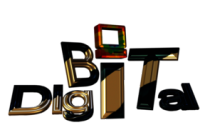Structural Monitoring Systems’ Technology to Revolutionize Structural Crack Detection on Commercial Aircraft
Structural Monitoring Systems Plc (“SMS”; ASX: SMN), a U.K. registered company engaged in the development and commercialization of technology for testing and monitoring the structural integrity of materials, announced at the MRO Americas conference that its Comparative Vacuum Monitor (“CVM™”) sensor technology for detecting cracks on commercial aircraft received a Supplemental Type Certificate (“STC”) approval from The Federal Aviation Administration (“FAA”).
“The solution to monitor structures on aircraft is known as Structural Health Monitoring – in this category, our CVM™ technology is the forerunner. The aviation industry provides a great array of applications and programs for the full commercialization of the CVM™ technology platform,” says Rich Poutier, Executive Vice President of Business Development for SMS.
Working together with the FAA and partners Delta Air Lines (“Delta”) and Delta Engineering firm (not affiliated with Delta), SMS has undertaken multiple programs to certificate the use of CVM™ sensors for accurate, reliable, in-situ monitoring of the structural integrity of aircraft. SMS’ sensors have already been installed on more than twenty aircraft operated by Delta.
“This first-ever certification from FAA for using CVM™ sensors to detect cracks on aircraft will revolutionize the industry maintenance inspection methods and provide airlines the ability to fly longer periods of time before aircraft must be routed to the hangar,” explains Poutier.
The initial certification is limited to performing inspections on the Intelsat 2ku antenna support structure on Boeing 737-800 aircraft; however, SMS expects to easily adapt the sensor configuration to many other inspection areas. In addition to the approved Wi-Fi antenna structure inspections, SMS and Delta are actively pursuing OEMs to incorporate the CVM™ sensor technology into service bulletins as an accepted method of compliance for structural inspections.
CVM™ sensors can be used to replace inspections currently being performed with High-Frequency and Low-Frequency Eddy Current (“HFEC/LFEC”) equipment to detect surface cracks. Performing an inspection with CVM™ sensors can be conducted at the gate with a short turnaround time as opposed to, in most cases, taking aircraft to the hangar to conduct traditional HFEC/LFEC inspections.
In addition to the time and money saved by not having to perform inspections in a hangar, the CVM™ sensor technology can enhance maintenance planning departments sequencing inspection tasks. For example, repetitive inspections due at 3,500 and 4,500 cycles are typically scheduled to be performed together for operational convenience to reset the interval clock. Oftentimes, this results in airlines discarding more than 1,000 cycles of available greentime operations.
According to the Oliver Wyman/Cavok data, published in a recent article by Aviation Week Magazines Inside MRO, entitled: "Structural Health Sensors Come of Age,” for a North American legacy narrowbody operator flying four cycles per day, the 1,000 cycles would equate to about 250 days of extra flying. For a low-cost or ultra-low-cost carrier that flies 4.5 cycles per day, it would equate to about 220 extra days. For widebody aircraft being flown 1.75 cycles per day, that number jumps to about 550 days.
“As we make this novel sensor technology available to the airline industry, looking ahead, we are aiming for CVM™ sensors to become the routinely accepted method for performing periodic, continual maintenance on all aircraft types worldwide,” concludes Poutier.
For read an overview of SMS’ CVM™ sensor technology, visit https://www.smsystems.com.au/technology-overview/.
About SMS
Structural Monitoring Systems Plc (“SMS”) is a U.K. registered company and is publicly traded on the Australian Stock Exchange under the ticker: SMN. The company is engaged in development and commercialization of technology for testing and monitoring the structural integrity of materials that are subject to stress and fatigue. www.smsystems.com.au
View source version on businesswire.com: https://www.businesswire.com/news/home/20220426005870/en/



